Typeerror Tuple Indices Must Be Integers Or Slices Not Str
Tuple Basics:
In Python, a tuple is an ordered collection of elements enclosed in parentheses and separated by commas. Tuples are similar to lists, but unlike lists, they are immutable, meaning that their elements cannot be modified once assigned. Tuples are commonly used to store related pieces of data that are expected to remain unchanged.
Nested Data Structures:
A tuple can contain any combination of data types, including other tuples. This allows for the creation of nested data structures, where one or more tuples are stored within another tuple. For example:
“`python
person = (“John”, “Doe”, (25, “USA”))
“`
In this example, the “person” tuple contains three elements: the first name, last name, and a nested tuple representing the person’s age and country.
Indexing and Slicing:
Like lists and other sequence types in Python, tuples can be accessed using indexing and slicing. Indexing allows you to retrieve a specific element from the tuple, while slicing allows you to extract a portion of the tuple. Indexing starts at 0, meaning the first element of a tuple can be accessed using index 0.
“`python
person = (“John”, “Doe”, (25, “USA”))
print(person[0]) # Output: “John”
print(person[2][0]) # Output: 25
“`
In this example, “person[0]” retrieves the first name “John,” while “person[2][0]” retrieves the age 25 from the nested tuple.
TypeError: Tuple Indices:
The error message “TypeError: tuple indices must be integers or slices, not str” occurs when you attempt to access or modify a tuple using an inappropriate index type, such as a string. This error commonly occurs when you mistakenly use a string as an index instead of an integer or slice.
Understanding the Error Message:
The error message highlights the type of index you are trying to use and indicates that it should be an integer or a slice, not a string. This helps pinpoint the issue and suggests the correct data type that should be used when indexing a tuple.
Common Causes of the Error:
1. Incorrect Indexing: Using a string instead of an integer or a slice when indexing a tuple can cause this error. Ensure that you are using the correct index type.
2. Nested Tuples: If your tuple contains nested tuples, make sure you are using the correct index for each level of nesting. Using a string index where an integer index is expected for a nested tuple will result in the “TypeError” message.
Troubleshooting Tips:
1. Verify Index Types: Double-check that you are using the correct index types when accessing a tuple element. Remember that indices should be integers or slices, not strings. If necessary, convert the index type to match.
2. Check Nested Tuples: If your tuple contains nested tuples, examine the indexes used to access the elements within each level of nesting. Ensure that you are using integers or slices and not strings.
3. Review Context: Consider the context in which the error occurs. Check for any inconsistencies or unexpected behavior in your code that could lead to incorrect index usage.
Convert Tuple to Dict Python:
To convert a tuple to a dictionary in Python, you can use the dict() constructor. The tuple should consist of pairs of key-value elements. Here’s an example:
“`python
person = ((“first_name”, “John”), (“last_name”, “Doe”))
person_dict = dict(person)
print(person_dict) # Output: {“first_name”: “John”, “last_name”: “Doe”}
“`
In this example, the “person” tuple is converted into a dictionary by passing it as an argument to the dict() constructor.
String Indices Must Be Integers:
Apart from the “TypeError: tuple indices must be integers or slices, not str” error, you may also encounter a similar error message when attempting to index a string using a non-integer index. This error occurs when you accidentally use a string index instead of an integer.
List Tuple to Dict Python:
To convert a list of tuples to a dictionary in Python, you can use the same dict() constructor as the previous example. Each tuple in the list should contain a pair of key-value elements. Here’s an example:
“`python
data = [(“name”, “John”), (“age”, 25), (“country”, “USA”)]
data_dict = dict(data)
print(data_dict) # Output: {“name”: “John”, “age”: 25, “country”: “USA”}
“`
In this example, the “data” list of tuples is converted into a dictionary using the dict() constructor.
Tuple in Python:
A tuple in Python is an immutable collection of elements surrounded by parentheses and separated by commas. Tuples are used to store related pieces of data and are commonly used when the data is not expected to change. Tuples can contain any combination of data types and may even include other tuples.
FAQs:
Q: Can you provide more examples of when the “TypeError: tuple indices must be integers or slices, not str” error occurs?
A: Sure! This error can also occur when attempting to access or modify elements in a list, dictionary, or other data structures using a string index.
Q: What can I do to fix the “TypeError” error?
A: To fix the error, ensure that you are using integers or slices instead of strings as indices when working with tuples or other data structures. Double-check your indexing logic and consider converting the index type if necessary.
Q: Can I modify a tuple after it is created?
A: No, tuples are immutable, meaning their elements cannot be modified or reassigned after creation. If you need to modify the data, consider using a list instead.
Conclusion:
Understanding the error message “TypeError: tuple indices must be integers or slices, not str” is essential for efficient debugging and error resolution in Python. This error occurs when you attempt to access or modify a tuple using a string index instead of an integer or a slice. By reviewing the common causes of this error and following the troubleshooting tips provided, you can correct the issue and ensure smoother execution of your Python code. Remember to always use the appropriate index type when working with tuples or any other data structure that requires indexing.
Typeerror: Tuple Indices Must Be Integers Or Slices, Not Str
What Does Tuple Indices Must Be Integers Or Slices Not Float?
In Python, tuples are a type of ordered collection, similar to lists, that can store multiple items of different types. Each item in a tuple is assigned an index starting from 0, which allows for easy retrieval of specific elements. However, there is a crucial restriction when it comes to accessing tuple elements using indices: they must be integers or slices, not floats.
The primary reason behind this limitation lies in the design of tuples and the way they are implemented in Python. Tuples are designed to be immutable, meaning that once created, their elements cannot be modified. This immutability is achieved using a fixed amount of memory that is allocated to store the tuple’s elements. As a result, tuple indexing becomes a simple process of accessing elements at specific memory locations based on their indices.
Floats, on the other hand, represent non-integer numbers in Python. They are implemented differently from integers, using a variable amount of memory to store both the value and the precision of the number. This dynamic nature of floats makes it impossible to determine their memory locations based solely on their indices, as is the case with integers.
Attempting to use a float as an index for accessing tuple elements will lead to a TypeError, indicating that tuple indices must be integers or slices. This error is a protective measure to prevent potential corruption of the tuple’s structure and to ensure reliable memory access.
Let’s illustrate this with an example:
“`python
my_tuple = (‘apple’, ‘banana’, ‘cherry’, ‘date’)
print(my_tuple[1]) # Output: ‘banana’
print(my_tuple[1.0]) # TypeError: tuple indices must be integers or slices, not float
“`
In the above code snippet, we have a tuple named `my_tuple` consisting of four different fruits. When we try to access the element at index 1, it correctly returns ‘banana’. However, when we attempt to use a float value of 1.0 as the index, a TypeError is raised.
Frequently Asked Questions:
Q: Can we use other non-integer types, such as strings, as tuple indices?
A: No, only integers or slices are allowed as tuple indices. The rationale remains the same: ensuring predictable memory access and maintaining the immutability of tuples.
Q: Why are slices allowed as tuple indices while floats are not?
A: Slices are a range of indices that define a portion of a sequence, such as a substring from a string or a subset of items from a list. Slices are implemented using a combination of start, stop, and step values, which allows memory access to be determined. Unlike floats, slices offer consistent and predictable access to the elements within the specified range.
Q: Is there any way to achieve float-based indexing in tuples?
A: If you require floats as indices for some specific use case, you can convert them to integers or slices through appropriate rounding or typecasting. However, it is crucial to consider the implications and potential loss of precision when doing so.
Q: Do other Python data structures exhibit the same indexing restriction as tuples?
A: No, this limitation is specific to tuples due to their immutability and memory allocation scheme. Other data structures such as lists or strings do not have the same restriction and can be indexed using floats without raising any errors.
In conclusion, the restriction that tuple indices must be integers or slices, not floats, exists to ensure the integrity and predictability of tuple operations in Python. Using floats as indices would compromise the immutability and memory access mechanisms that are fundamental to tuples. Remember to always use integers or slices when accessing tuple elements to avoid encountering a TypeError.
What Does List Indices Must Be Integers Or Slices Not Tuple?
If you’ve ever encountered the error message “list indices must be integers or slices, not tuple” in Python, you may have wondered what it means and why it occurs. Understanding this error message is crucial for Python developers, as it can help troubleshoot and debug code efficiently. In this article, we will delve into the meaning behind this message, explore common scenarios where it may occur, and provide potential solutions to resolve the issue.
Understanding the Error Message
In Python, lists are ordered sequences of elements that can be accessed using indices. An index refers to the position of an element within a list. The error message “list indices must be integers or slices, not tuple” is thrown when we mistakenly try to use a tuple as an index instead of a regular integer or slice.
A tuple is similar to a list, but it is immutable, meaning its elements cannot be modified. Trying to use a tuple as an index is not allowed because it conflicts with the mutable nature of lists. To resolve this error, we need to ensure that we pass an appropriate index that is either an integer or a slice.
Scenarios Where the Error Occurs
1. Incorrect Indexing Syntax: The most common scenario where this error message arises is when we mistakenly use round brackets () instead of square brackets [] for indexing a list. Take the following example:
my_list = [1, 2, 3, 4]
index = (0, 1)
element = my_list[index]
In the code snippet above, we are trying to access an element in the list using a tuple (0, 1) as an index. However, since list indices must be integers or slices, this code will throw the mentioned error. To fix it, we should modify the indexing syntax to use square brackets []:
my_list = [1, 2, 3, 4]
index = [0, 1]
element = my_list[index]
2. Incorrect Unpacking: Another scenario where this error may occur is when we mistakenly unpack a tuple and use it as a single index value. Consider the following example:
my_list = [‘a’, ‘b’, ‘c’, ‘d’]
index_tuple = (0, 1)
index = *index_tuple
element = my_list[index]
In this case, we try to unpack the tuple (0, 1) into a single index. However, since a tuple is not a valid index, the error message is raised. To correct this, we should directly use the tuple as it is:
my_list = [‘a’, ‘b’, ‘c’, ‘d’]
index_tuple = (0, 1)
element = my_list[index_tuple]
Solving the Error
To overcome the “list indices must be integers or slices, not tuple” error, we need to ensure that we only use appropriate integer or slice indices when accessing list elements. Here are a few potential solutions to resolve the issue:
1. Correct Indexing Syntax: The most straightforward solution is to use square brackets [] for indexing instead of round brackets (). This ensures the correct syntax for accessing list elements.
2. Use a Single Integer: If you’re trying to access a single element in a list, ensure that your index is a single integer and not a tuple. For example, instead of using index = (0, 1), use index = 0 to access the first element of the list.
3. Use Slicing: If you need to access multiple elements in a list, consider using slicing with a colon (:) instead of using tuples. For instance, if you want to access the first two elements of a list, use index = [0:2] instead of index = (0, 1).
FAQs (Frequently Asked Questions):
Q1: Does this error occur only in lists?
A1: No, this error can also occur in other data structures like tuples and arrays if incorrect indexing syntax is used.
Q2: What is the difference between a tuple and a list?
A2: The main difference is that a tuple is immutable (cannot be modified), while a list is mutable (can be modified).
Q3: Can I use a tuple as an index in other programming languages?
A3: It depends on the programming language. Some languages allow tuples as indices, while others have specific rules like in Python.
Q4: Are there any situations where using a tuple as an index is allowed in Python?
A4: Typically, tuples are not used directly as indices in Python. However, they can be used as keys in dictionaries.
Q5: How can I avoid encountering this error in the future?
A5: By carefully understanding the difference between tuples and lists and ensuring that the correct syntax is used for indexing, you can mitigate the occurrence of this error.
In conclusion, understanding the “list indices must be integers or slices, not tuple” error is instrumental in effective Python development. By recognizing the scenarios where this error commonly occurs and implementing appropriate solutions, you can avoid this error and write robust Python code.
Keywords searched by users: typeerror tuple indices must be integers or slices not str Tuple indices must be integers or slices, not tuple, TypeError: list indices must be integers or slices, not tuple, List indices must be integers or slices, not str, List indices must be integers or slices, not dict, Convert tuple to dict Python, String indices must be integers, List tuple to dict Python, Tuple in Python
Categories: Top 18 Typeerror Tuple Indices Must Be Integers Or Slices Not Str
See more here: nhanvietluanvan.com
Tuple Indices Must Be Integers Or Slices, Not Tuple
When working with tuples in Python, we often need to access specific elements or ranges of elements within the tuple. To do so, we rely on indices. However, it is important to note that tuple indices must be integers or slices, and not tuples themselves. In this article, we will explore this concept in depth and explain why this restriction exists in Python.
Understanding Tuples in Python
Before delving into tuple indices, let’s recap what tuples are in Python. Tuples are immutable sequences, which means they cannot be modified once they are created. They are represented using parentheses () and can hold elements of different data types. For example:
“`python
my_tuple = (1, ‘hello’, 3.14)
“`
Tuples are often used to group related data together, and they provide a convenient way to store and access multiple values as a single entity.
Working with Tuple Indices
To access elements within a tuple, we use indices. Indices in Python start from 0, with the first element of a tuple having an index of 0, the second element having an index of 1, and so on. We can access a specific element by specifying its index within square brackets [] after the tuple variable. For example:
“`python
my_tuple = (1, ‘hello’, 3.14)
print(my_tuple[1]) # Output: hello
“`
In this example, we accessed the second element of the tuple using the index 1 and printed its value.
Using Slices
In addition to accessing individual elements, we can also use slices to extract a range of elements from a tuple. Slices are specified using a start index, an end index (excluding the element at the end index), and an optional step value. For example:
“`python
my_tuple = (1, 2, 3, 4, 5)
print(my_tuple[1:4]) # Output: (2, 3, 4)
“`
In this case, we retrieved a slice of the tuple starting at index 1 and ending at index 4 (excluding the element at index 4). The resulting slice contains the elements (2, 3, 4).
The Restriction on Tuple Indices
Now that we understand how tuples and indices work, we can address the restriction on tuple indices. In Python, tuple indices must be integers or slices, not tuples themselves. This means that we cannot use a tuple as an index value when trying to access elements within a tuple. For example:
“`python
my_tuple = (1, 2, 3)
print(my_tuple[(0, 1)]) # This will raise a TypeError!
“`
In this case, attempting to use a tuple as an index value will result in a TypeError. This restriction is in place because tuples themselves are immutable, and using them as indices could lead to unpredictable behavior and violate the immutability principle.
Indexing a Tuple with a Tuple
Sometimes, we may have a tuple that contains indices and want to use these as a reference to access elements in another tuple. In such cases, we need to individually access the elements of the first tuple and use them as indices within the second tuple. Here’s an example:
“`python
tuple_with_indices = (0, 2, 1)
my_tuple = (10, 20, 30)
result = (my_tuple[tuple_with_indices[0]], my_tuple[tuple_with_indices[1]], my_tuple[tuple_with_indices[2]])
print(result) # Output: (10, 30, 20)
“`
In this example, we are accessing elements from `my_tuple` using the indices specified in `tuple_with_indices`. We individually retrieve the elements from `tuple_with_indices` and use them as indices to access the desired elements from `my_tuple`.
FAQs:
Q: Why does Python restrict tuple indices to integers or slices?
A: The restriction is in place to maintain the immutability of tuples. If tuples could be used as indices, the values within them could change, leading to undefined behavior and violating the immutability principle.
Q: Can I modify a tuple using slice indices?
A: No, you cannot modify a tuple using indices. Tuples are immutable, meaning they cannot be changed once created. Slices provide a way to extract a range of elements, but they cannot be used to modify or assign new values to elements within a tuple.
Q: Is it possible to access multiple elements from a tuple at once using a tuple index?
A: No, it is not possible to access multiple elements from a tuple using a tuple index. Tuple indices must refer to individual elements or ranges of elements using slices, not multiple elements at once.
Q: How can I change the value of an element within a tuple?
A: Since tuples are immutable, you cannot directly change the value of an element within a tuple. To modify a tuple, you would need to create a new tuple with the desired changes.
Q: Can I use negative indices or step values with tuple indices?
A: Yes, you can use negative indices to access elements from the end of a tuple and specify a step value to extract elements with a certain interval. The usage of negative indices and step values remains the same as with regular indices and slices.
In conclusion, tuple indices must be integers or slices, not tuples themselves. This restriction exists to preserve the immutability of tuples and prevent undefined behavior. By understanding this limitation, developers can effectively work with tuples in Python and leverage their benefits in various scenarios.
Typeerror: List Indices Must Be Integers Or Slices, Not Tuple
Introduction (100 words):
TypeError: list indices must be integers or slices, not tuple is a common error message encountered by Python programmers. This error typically occurs when trying to access or modify a list element using a tuple as an index—a process that is not supported by Python’s indexing mechanism for lists. To help you better understand this frequently encountered error, we will delve into its causes, explore possible scenarios where it may occur, suggest troubleshooting techniques, and provide a FAQs section to address common queries.
Understanding the Error (200 words):
The fundamental cause of “TypeError: list indices must be integers or slices, not tuple” is the incompatibility between the list index operator and tuples. In Python, lists are a type of data structure that can be indexed using integers or a range of integers. On the other hand, tuples are immutable sequences, similar to lists but with distinct characteristics.
When trying to access or modify a list element, Python expects a valid integer or slice as the index. However, if a tuple is mistakenly used as an index, this error is raised since tuples are not interpretable by Python’s indexing mechanism for lists. It’s important to note that while lists themselves may contain tuples as elements, using a tuple as an index is not supported.
Common Scenarios (250 words):
1. Iterating Over Nested Lists: The error can occur when iterating over nested lists with nested for loops and improperly specifying indices using tuples instead of integers. Ensuring proper indexing using integers in this scenario resolves this error.
2. Key-Value Pairs: When attempting to access a list element using a tuple containing key-value pairs instead of a valid integer or slice index, the error occurs. Here, the correct approach would be to use a dictionary or a different data structure appropriate for key-value pair access and modification.
3. Overcomplicated Operations: Occasionally, this error arises when attempting to perform complex operations involving lists and tuples, such as nested calculations or manipulations of mixed data types. Simplifying the operation into smaller, more manageable steps usually helps identify and rectify the error.
Troubleshooting Techniques (200 words):
When encountering the “TypeError: list indices must be integers or slices, not tuple,” it is important to verify the index type used. Here are some troubleshooting techniques to solve this error:
1. Double-check index usage: Verify that the index used is a valid integer or slice index, not a tuple.
2. Review list comprehension: If the error arises during list comprehension, check for potential inconsistencies in the constructs and indexes used.
3. Consider using dictionaries: If key-value pair access is required, consider using Python dictionaries instead of lists or tuples as they are more suitable for such cases.
4. Debugging techniques: Implement debugging techniques such as printing variable values and stepping through the code using debuggers, to identify the problematic line of code.
FAQs (218 words):
Q1: Can I use a tuple as an index for other Python data structures?
No, tuples cannot be used as indices for any standard Python data structure. Indexing in Python generally requires integers or slices.
Q2: How can I fix the “TypeError: list indices must be integers or slices, not tuple” error when iterating over nested lists?
Ensure that the proper indices (integers) are used in the nested for loops when iterating over the nested lists.
Q3: What should I do if the error occurs while accessing key-value pairs in a list?
Consider using a dictionary instead, as it is more suitable for key-value pair access and modification.
Q4: Can this error be caused by mixed data types within the list?
Yes, if the list contains mixed data types and the operation being performed attempts to use a tuple as an index, this error may occur. Simplifying the operation into smaller, more manageable steps can help identify and resolve the error.
Q5: Are there any alternatives to tuples for data structures with immutable elements?
Yes, Python provides other immutable data structures such as strings and frozensets that can be used as alternatives to tuples in certain cases.
Conclusion (50 words):
“TypeError: list indices must be integers or slices, not tuple” is a common error faced by Python developers due to incorrect indexing. By understanding the causes and using appropriate troubleshooting techniques, programmers can resolve this error and write more efficient and error-free code.
Images related to the topic typeerror tuple indices must be integers or slices not str

Found 45 images related to typeerror tuple indices must be integers or slices not str theme
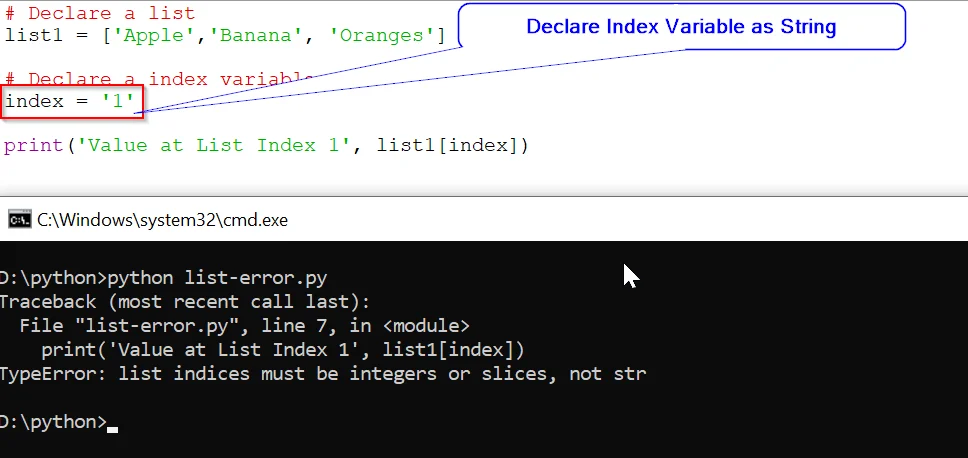


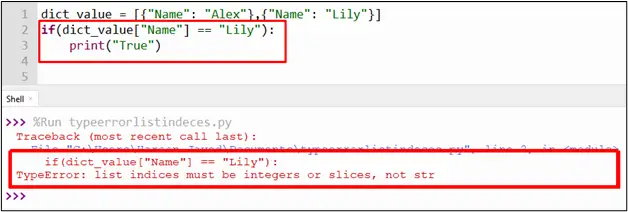
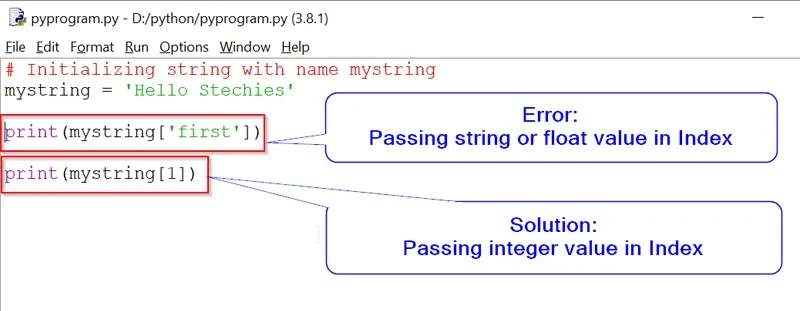
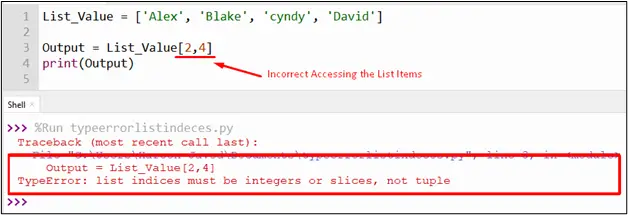



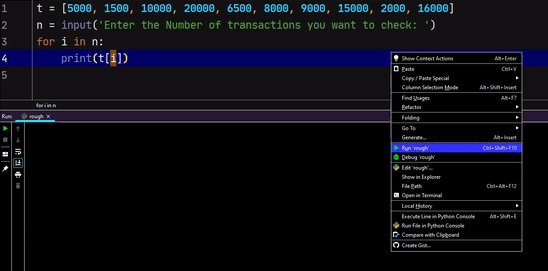



![typeerror: '_io.textiowrapper' object is not subscriptable [SOLVED] Typeerror: '_Io.Textiowrapper' Object Is Not Subscriptable [Solved]](https://itsourcecode.com/wp-content/uploads/2023/04/typeerror-_io.textiowrapper-object-is-not-subscriptable.png)




_9234typeerror-string-indices-must-be-integers9234-when-getting-data-of-a-stock-from-yahoo-finance-usin.jpg)
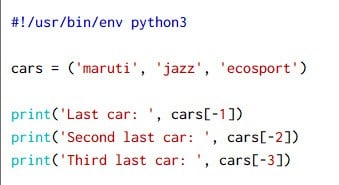








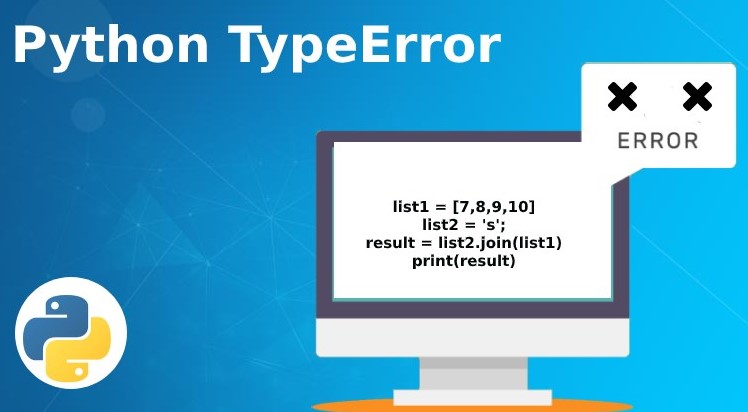
![Solved][Python3] TypeError: tuple indices must be integers, not str Solved][Python3] Typeerror: Tuple Indices Must Be Integers, Not Str](https://img1.daumcdn.net/thumb/C176x176/?fname=https://blog.kakaocdn.net/dn/csMfjQ/btqKuGC0kVN/3SAZDn8Fn0ydnGgocCsquK/img.png)
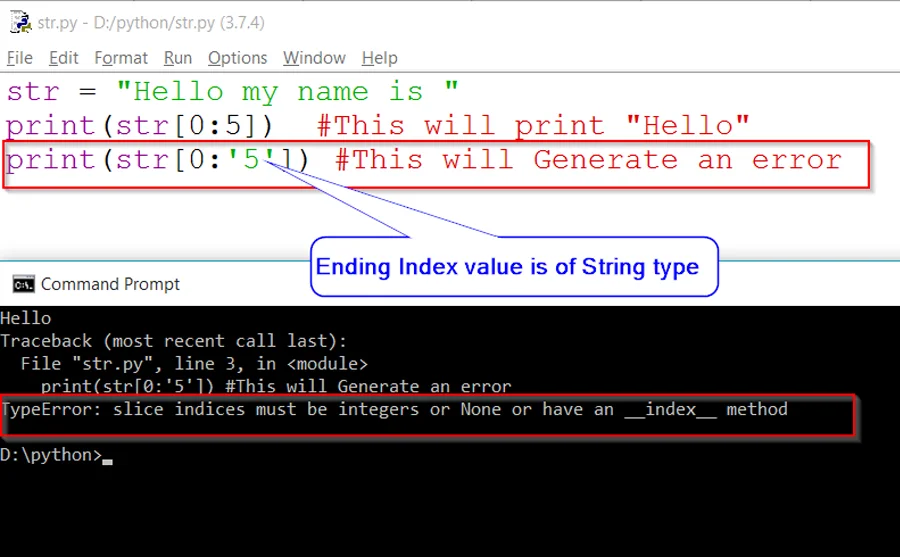







Article link: typeerror tuple indices must be integers or slices not str.
Learn more about the topic typeerror tuple indices must be integers or slices not str.
- TypeError: tuple indices must be integers, not str
- tuple indices must be integers or slices, not str – Python-forum.io
- TypeError: tuple indices must be integers, not str – Codecademy
- Python TypeError: list indices must be integers or slices, not float Solution
- TypeError: list indices must be integers or slices, not tuple
- Python TypeError: list indices must be integers, not tuple Solution
- Understanding Tuples in Python 3 – DigitalOcean
- Python pandas TypeError tuple indices must be integers or …
- TypeError: list indices must be integers or slices, not tuple
- tuple indices must be integers or slices, not str · Issue #4415 …
- TypeError: tuple indices must be integers or slices, not tuple – nlp
See more: nhanvietluanvan.com/luat-hoc